Camelina (Camelina sativa (L.)), also known as false flax, is an ancient oilseed crop in the Brassicaceae or mustard family related to canola and cole crops. The seed does not have high antinutritional compounds such as glucosinolates or erucic acid, which are characteristic of some other mustards. It is produced primarily for its edible oil that can be converted to biofuels or raw material for biodegradable plastic packaging materials and lubricants. It is an annual grown in semi-arid conditions with a relatively low water footprint. It can be grown under rainfed conditions in Florida. Camelina is currently cultivated in the drier parts of the United States in Minnesota, Montana, North Dakota, and South Dakota. The seed is about 35% oil, and the oil is high in omega-3 fatty acids, which were reported to have health benefits. Camelina meal can be fed to livestock to increase levels of omega-3 fatty acids in eggs and meat. Camelina is also a renewable source of feedstock for biodiesel and advanced biofuels.
Adaptability
Camelina has a wide range of adaptability, fitting into many different cropping systems due to its relatively short period of growth (90–175 days depending on sowing season and date). Camelina seedlings can survive intense cold (i.e., into the teens) and can be planted before or after main cash crops in southern latitudes in the spring or fall. In small plot trials in north Florida, camelina has performed best when planted after soybean (860 lb/acre) or peanut (685 lb/acre). The yield was reduced by 25% when planted after cotton or corn. Even though the crop has been grown for thousands of years, research related to production is limited and will develop as camelina’s value increases as a renewable energy crop. Many of the current production practices are taken from related crops (mainly canola). In dry climates, camelina can be grown in fields lying fallow between crops, providing year-round income and serving as a renewable energy and rotation crop.
Stand Establishment
Camelina breeding efforts have been limited; thus, only a few improved varieties are available. It can be established with no-till drills in firm seedbeds or a grain drill on prepared land. For new growers, a cultipacker seeder may be the best tool for establishing stands on prepared seedbeds. Seeding depth is critical for establishment. Between 3–10 lb/acre of seed can be planted at a depth of ¼–½ inch deep. The seed size is small, with about 400,000–500,000 seeds per lb.
Planting Date
In Florida, camelina performs best when planted in mid-November. Growth and development generally decline when planting is delayed. Seed yields of 1,000–1,495 lb/acre were obtained when planted in mid-November in field trials. November plantings typically have the lowest lodging rates and greatest plant growth. Earlier planting (October) can result in yield reductions from relatively high lodging rates. When planting is delayed from November to December and beyond, yields are predominantly reduced from decreased plant growth and development. The time of planting also influences seed quality. Both protein and crude fat concentrations decrease when planting is delayed. The type of tillage (chisel, disk, or harrow) does not influence growth, yield, or lodging.
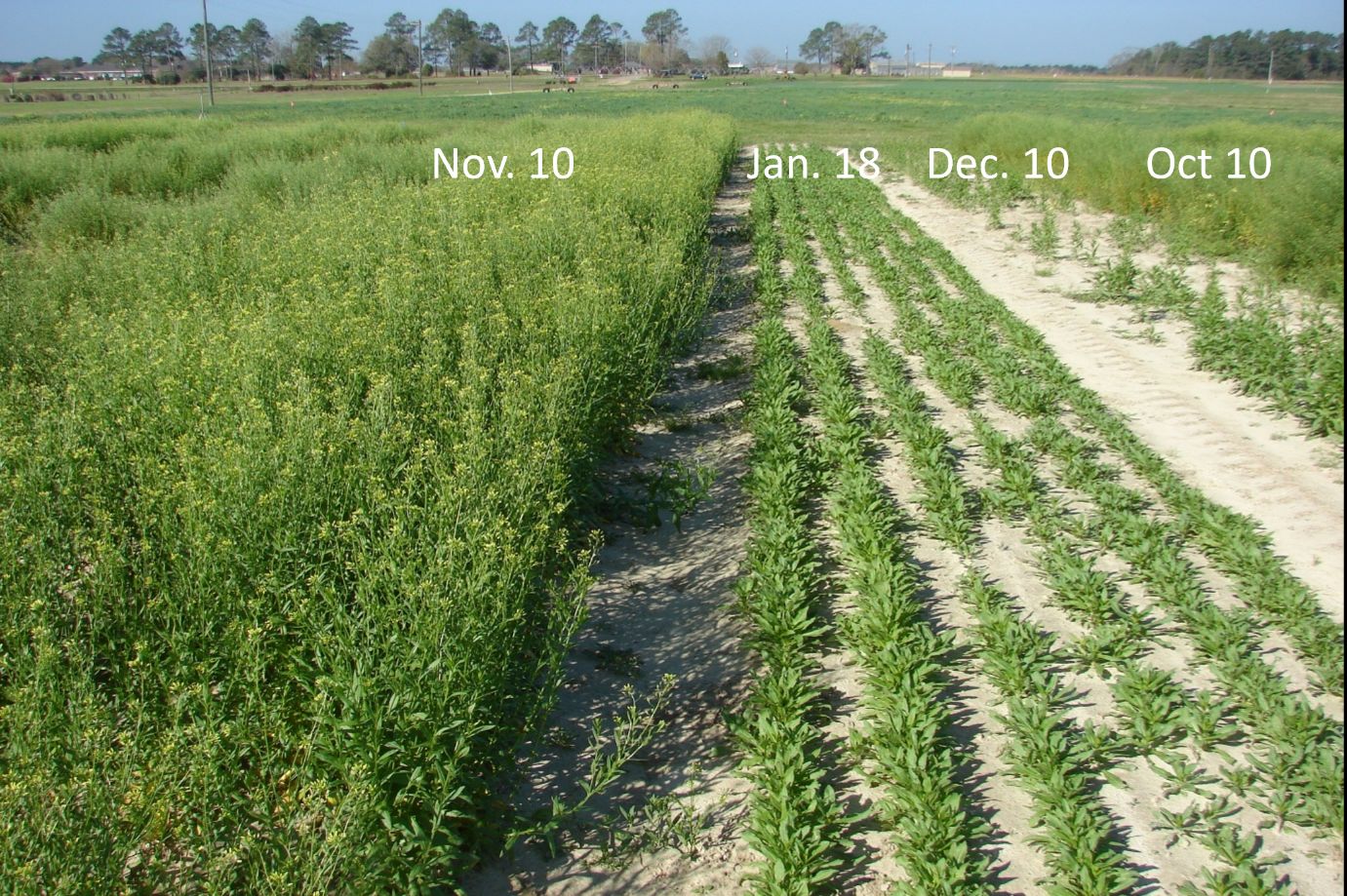
Credit: David Wright, UF/IFAS
Pest and Disease Management
Currently, no broadleaf weed herbicides are labeled for use on camelina. Therefore, it is essential to plant in a weed-free seedbed. The growth period of wild radish (Raphanus raphanistrum L.) may coincide with camelina production in Florida (Figure 1). Fields with a history of wild radish infestations should be avoided. Little is known about the impacts of residual herbicides from other crops on camelina establishment. Currently, most university researchers working on camelina suggest that the same restrictions on residual herbicides for canola be followed for camelina. It is also recommended that camelina not be planted more than once every three years in the same field to prevent the spread of sclerotinia stem rot and other diseases common to the mustard family. Camelina was reported to be susceptible to downy mildew in Florida (Srivastava et al. 2012). Symptoms of downy mildew include gray-white mycelium on lower leaf surfaces, the upper third portion of plants, stem internodes, and the developing pods. Severe downy mildew infection rates can reduce seed yield.

Credit: David Wright, UF/IFAS
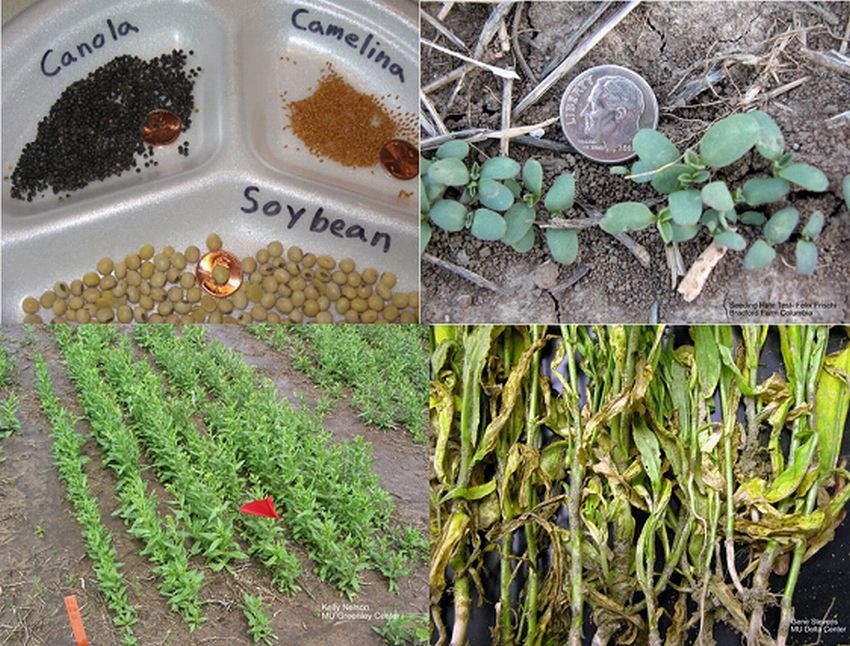
Credit: David Wright, UF/IFAS
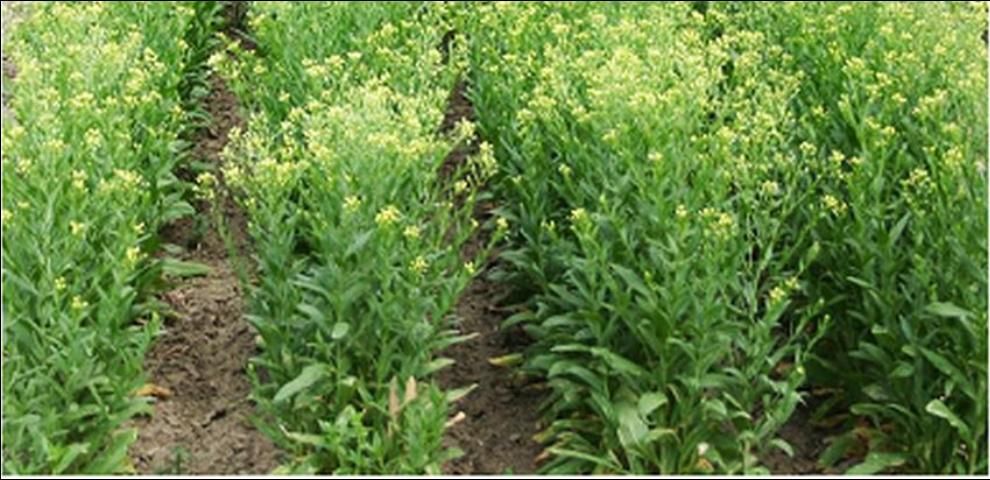
Credit: David Wright, UF/IFAS
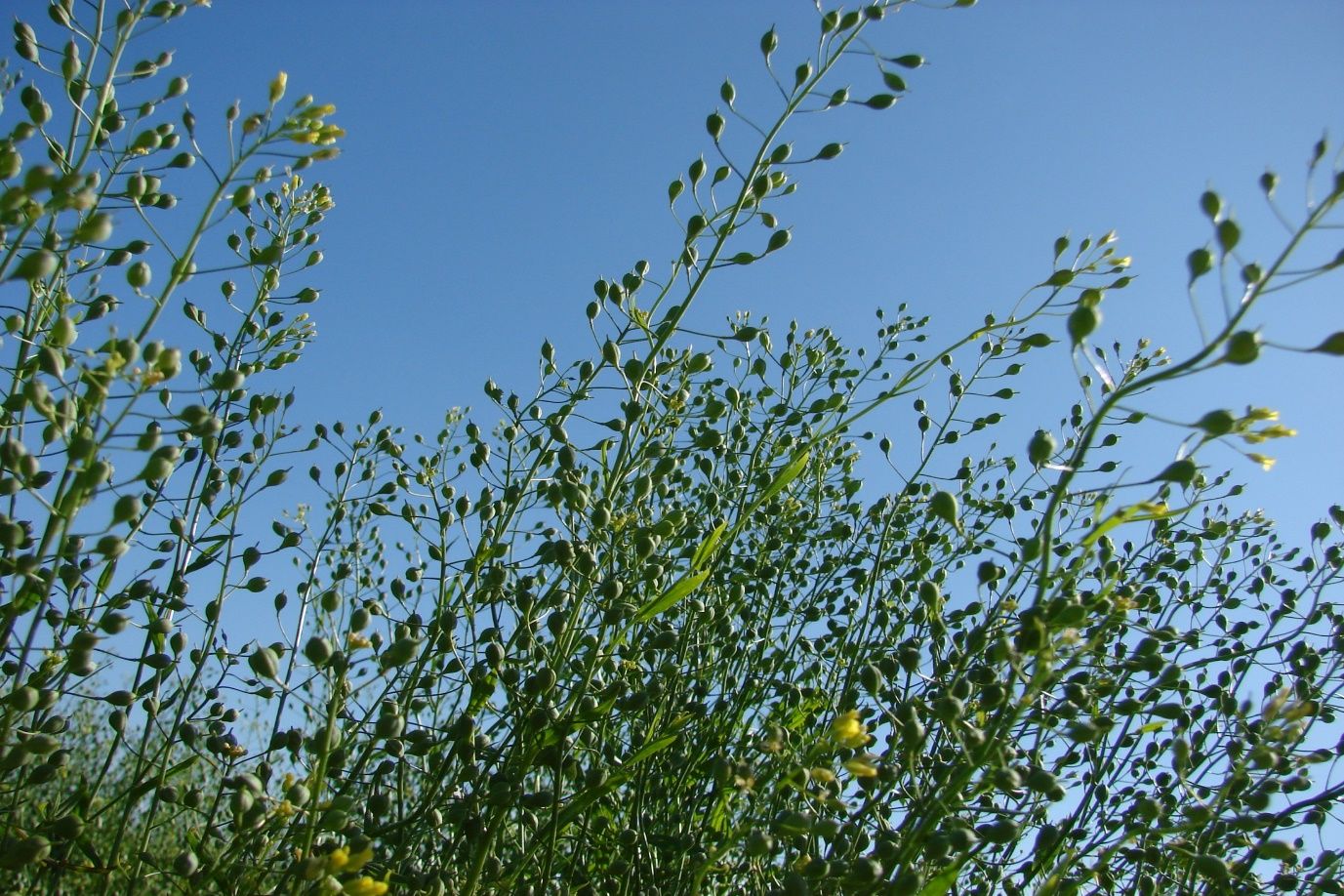
Credit: David Wright, UF/IFAS
Nutrient Management
Very few fertilizer response trials have been conducted in Florida. Camelina responds to nitrogen fertilization with maximum yields at 120 lb N/acre in replicated field trials. However, lodging can be elevated at high N rates. Camelina may not be responsive to phosphorus or potassium when planted in rotation with well-fertilized crops. Soil test recommendations should be followed for nitrogen and other nutrients.
Harvesting and Storage
Direct harvesting can be done with a grain combine when pods turn yellow. Like canola, reel speed is critical to keep shattering low during the harvest operation. The recommended moisture for seed storage is 8% to minimize damage and spoilage. Seed yield in field trials averages 850 lb/acre (Table 1). Yields in commercial production fields in Florida have been in the 500–700 lb/acre range.
Table 1. Performance of oilseed crops averaged across several growing seasons at the UF/IFAS North Florida Research and Education Center in Quincy, FL (George et al. 2021).
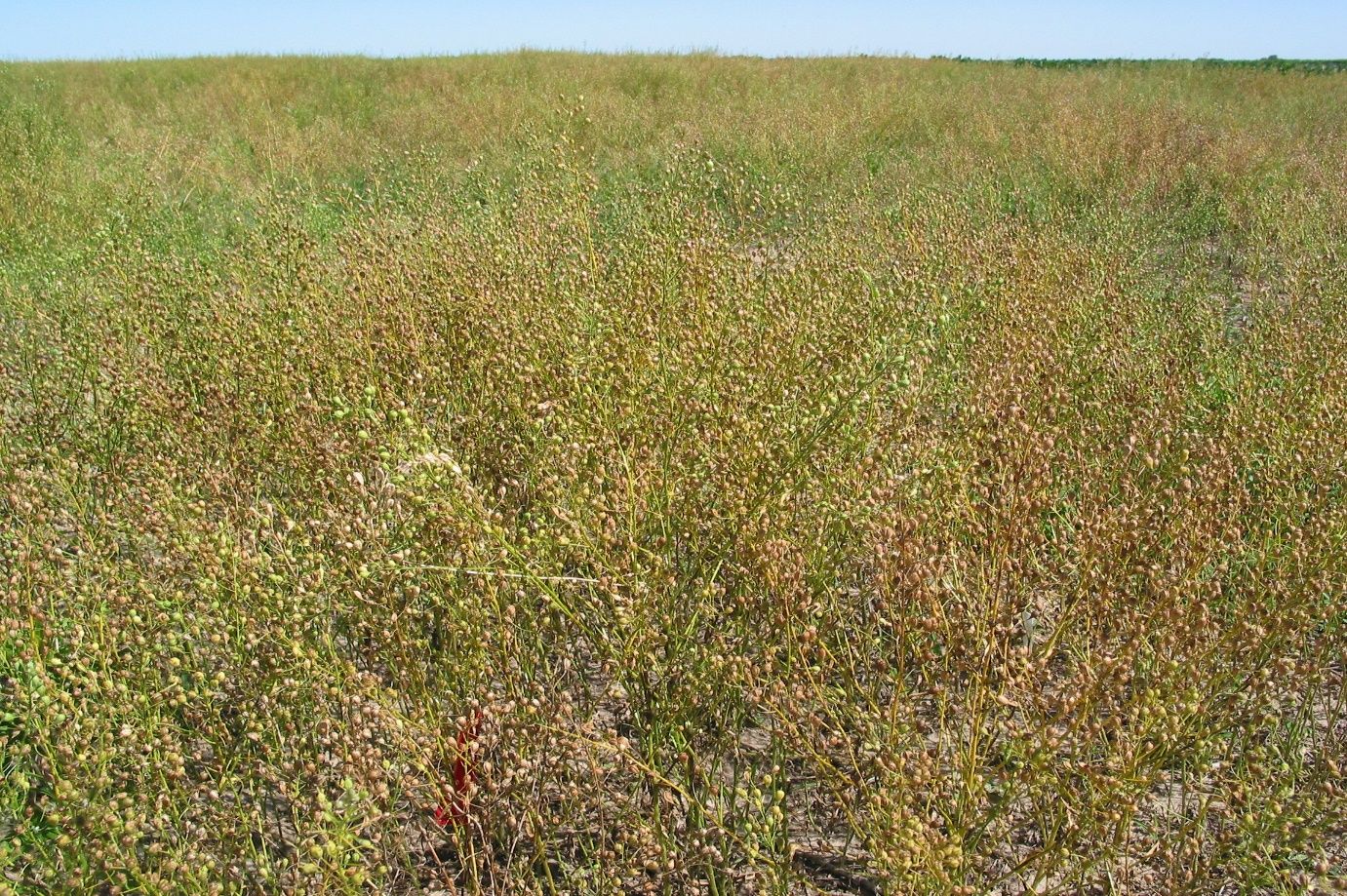
Credit: David Wright, UF/IFAS

Credit: David Wright, UF/IFAS
Future Perspectives
Interest in purpose-grown, sustainably produced oilseeds for biofuel feedstock is increasing. Research has been done to determine planting dates, nitrogen rates, and other management practices for optimizing camelina yields. Some breeding work for yield or oil content is being done in the Northern Plains states because camelina offers potential as a short-season biofuel crop that could fit into many different cropping systems. Approximately 2,000 acres of camelina were produced commercially in Florida. However, no commercial production has occurred in the past decade. No data are available on the impact of residual herbicides on camelina grown after harvest of peanut, cotton, or other row crops. Information will be provided as we learn more about production, management, and markets. Small-seeded crops such as canola and camelina can shatter if they are not harvested at the proper time. In 15 years of research and production, volunteer camelina plants never presented a problem in subsequent crops.
References
George, S., R. Seepaul, D. Geller, P. Dwivedi, N. DiLorenzo, R. Altman, E. Coppola, S. A. Miller, R. Bennett, G. Johnston, L. Streit, S. Csonka, J. Field, J. Marois, D. Wright, I. Small, and G. P. Philippidis. 2021. “A Regional Inter-Disciplinary Partnership Focusing on the Development of a Carinata-Centered Bioeconomy.” GCB Bioenergy 2021(13): 1018–1029. https://doi.org/10.1111/gcbb.12828
Srivastava, P., H. M. Young, J. J. Marois, D. L. Wright, H. Dankers, N. S. Dufualt, and P. F. Harmon. 2012. “First Report of Downy Mildew (Hyaloperonospora camelinae) on Camelina sativa in Florida.” Plant Dis. 96:11. https://doi.org/10.1094/PDIS-04-12-0358-PDN